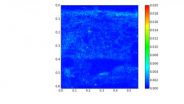(Press-News.org) New York, NY (February 6, 2013) — Columbia University Medical Center (CUMC) researchers have identified a protein trafficking defect within brain cells that may underlie common non-familial forms of Parkinson's disease. The defect is at a point of convergence for the action of at least three different genes that had been implicated in prior studies of Parkinson's disease. Whereas most molecular studies focus on mutations associated with rare familial forms of the disease, these findings relate directly to the common non-familial form of Parkinson's. The study was published today in the online edition of the journal Neuron.
The defective pathway is called the "retromer" pathway, in part because it can guide the reutilization of key molecules by moving them back from the cell surface to internal stores. In this study, defects in the retromer pathway also appear to have profound effects on the cell's disposal machinery, which may explain why Parkinson's disease brain cells ultimately accumulate large protein aggregates. The trafficking defects associated with Parkinson's can be reversed by increasing retromer pathway activity, suggesting a possible therapeutic strategy. No current therapies for Parkinson's alter the progression of the disease.
The researchers also found evidence that, even in unaffected individuals who simply carry common genetic variants associated with an increased risk of Parkinson's disease, these molecular changes are at work. This supports the notion that early treatment approaches will be important in tackling Parkinson's disease.
"Taken together, the findings suggest that drugs that target the retromer pathway could help prevent or treat Parkinson's," said study leader Asa Abeliovich, MD, PhD, associate professor of pathology and cell biology and of neurology in the Taub Institute for Research on Alzheimer's Disease and the Aging Brain at CUMC.
In recent years, through genome-wide association studies (GWAS), researchers have identified about 10 common genetic variants that appear to have small effects on the risk of non-familial Parkinson's, However, it has been hard to delve deeper into the impact of these variants. "When you look at patient brain tissue at autopsy, it's usually too late — all the critical dopamine neurons are long gone and the damage has been done," said Dr. Abeliovich.
In the current study, Dr. Abeliovich and his CUMC colleagues used an unusually broad array of approaches — including analyses of Parkinson's disease-associated genetic variations, patient brain tissue, in vitro tissue culture studies of brain neurons, and fruit fly (Drosophila) models that harbor genetic variants related to those associated with Parkinson's disease.
The researchers found that common variants in two genes previously linked to Parkinson's disease, LRRK2 and RAB7L1, led to an unexpectedly similar impact on human brain tissue. The effects of the variants were found to be highly overlapping, pointing to a common pathway of action. Prominent cellular changes were observed in the retromer pathway, which is involved in the trafficking of proteins from the Golgi apparatus (which packages proteins for delivery to other cell components) to the lysosomes (which recycle proteins and other molecules). Mutations that affect the retromer pathway have also been found in familial Parkinson's disease. Earlier studies from CUMC's Taub Institute have shown that genetic variants in genes associated with retromer function are linked to Alzheimer's disease and retromer component levels appear altered in Alzheimer's disease brains, suggesting a broader role for retromer dysfunction in neurodegenerative diseases of aging, according to Dr. Abeliovich.
The impact of the RAB7L1 and LRRK2 variants was apparent even in individuals with no signs or symptoms of Parkinson's disease. This suggests that there is a pre-disease state in unaffected carriers of the two genetic variants that favors early disease onset and that, in theory, could be targeted therapeutically.
The CUMC researchers also demonstrated that overexpression of one of the variants, RAB7L1, can overcome the effects of the other variant. Similarly, expression of VPS35, a gene involved in the retromer pathway, can suppress LRRK2 mutant pathology. "It will be interesting to look for drugs that directly target these retromer components or that more generally promote flow through the pathway," said Dr. Abeliovich.
INFORMATION:
The title of the paper is "RAB7L1 interacts with LRRK2 to modify intraneuronal protein sorting and Parkinson's disease risk." The other contributors are David A. Macleod, Herve Rhinn, Tomoki Kuwahara, Ari Zolin, Gilbert Di Paolo, Brian D. McCabe, Lorraine N. Clark, and Scott A. Small, all at CUMC.
The study was supported by grants from the Michael J. Fox Foundation and the National Institutes of Health (NS064433, NS060876, NS060113, A6008702, AG025161, and AG08702-21.
The authors declare no financial or other conflicts of interest.
The Taub Institute for Research on Alzheimer's Disease and the Aging Brain at Columbia University Medical Center is a multidisciplinary group that has forged links between researchers and clinicians to uncover the causes of Alzheimer's, Parkinson's and other age-related brain diseases and discover ways to prevent and cure these diseases. It has partnered with the Gertrude H. Sergievsky Center at Columbia University Medical Center, which was established by an endowment in 1977 to focus on diseases of the nervous system, and with the Departments of Pathology & Cell Biology and of Neurology to allow the seamless integration of genetic analysis, molecular and cellular studies and clinical investigation to explore all phases of diseases of the nervous system. For more information visit The Taub Institute at http://www.cumc.columbia.edu/dept/taub/.
Columbia University Medical Center provides international leadership in basic, pre-clinical and clinical research; medical and health sciences education; and patient care. The medical center trains future leaders and includes the dedicated work of many physicians, scientists, public health professionals, dentists, and nurses at the College of Physicians and Surgeons, the Mailman School of Public Health, the College of Dental Medicine, the School of Nursing, the biomedical departments of the Graduate School of Arts and Sciences, and allied research centers and institutions. Established in 1767, Columbia's College of Physicians and Surgeons was the first institution in the United States to grant the MD degree and is among the country's most selective medical schools. Columbia University Medical Center is home to the largest medical research enterprise in New York City and State and one of the largest in the United States. www.cumc.columbia.edu
END
Scientists have, for the first time, traced the nanoparticles taken up from the soil by crop plants and analysed the chemical states of their metallic elements. Zinc was shown to dissolve and accumulate throughout the plants, whereas the element cerium did not dissolve into plant tissue. The results contribute to the controversial debate on plant toxicity of nanoparticles and whether engineered nanoparticles can enter into the food chain. The study was published on 6 February 2013 in the journal ACS Nano.
The international research team was led by Jorge Gardea-Torresdey ...
Using publicly available data from NASA's Kepler space telescope, astronomers at the Harvard-Smithsonian Center for Astrophysics (CfA) have found that six percent of red dwarf stars have habitable, Earth-sized planets. Since red dwarfs are the most common stars in our galaxy, the closest Earth-like planet could be just 13 light-years away.
"We thought we would have to search vast distances to find an Earth-like planet. Now we realize another Earth is probably in our own backyard, waiting to be spotted," said Harvard astronomer and lead author Courtney Dressing (CfA).
Dressing ...
CHAMPAIGN, Ill. — Ever wonder why CEOs at poorly performing companies continue to receive exorbitant pay packages? According to a study from a University of Illinois labor professor, firms that trumpet how much they value shareholders actually pay their CEOs more, regardless of the quality of their performance as executives.
Using compensation data from 290 chief executives at large U.S. firms over an 11-year period, Taekjin Shin, a professor of labor and employment relations at Illinois, shows that CEOs at firms with the appearance of a "shareholder-value orientation" ...
Cichlid fish are more likely to accept immigrants into their group when they are under threat from predators and need reinforcements, new research shows. The researcher suggests that there are parallels between cooperatively breeding fish's and humans' regulation of immigrants. The research was published today, 6 February 2013, in the journal Proceedings of the Royal Society B.
The Princess of Lake Tanganyika (Neolamprologus pulcher), a cichlid fish which is popular in home aquariums, are cooperatively breeding fish with a dominant breeding pair and several 'helper' ...
Have you ever wondered why, and how, shoals of fish are comprised of fish of the same size? According to new research by Ashley Ward, from the University of Sydney in Australia, and Suzanne Currie, from Mount Allison University in Canada, fish can use a variety of different sensory cues to locate shoal-mates, but they are able to use chemical cues to find other fish of the same size as themselves. Using these cues, they can form a group with strength in numbers. The work is published online in Springer's journal, Behavioral Ecology and Sociobiology.
Forming groups is ...
Dr Michael Pogue, a Research Entomologist in the ARS Systematic Entomology Laboratory, at the Smithsonian Institution, Washington, DC, was sent a series of moth specimens from Bahia, Brazil, for identification. The insects were under consideration as a possible biocontrol agent for the invasive Brazilian peppertree in Florida.
'The species was initially identified as a common species, but when comparisons were made, it became evident that there were multiple species involved' said Dr. Pogue. Using characters from the moths' male and female genitalia, Dr. Pogue determined ...
Two of the most widely used nanoparticles (NPs) accumulate in soybeans — second only to corn as a key food crop in the United States — in ways previously shown to have the potential to adversely affect the crop yields and nutritional quality, a new study has found. It appears in the journal ACS Nano.
Jorge L. Gardea-Torresdey and colleagues cite rapid increases in commercial and industrial uses of NPs, the building blocks of a nanotechnology industry projected to put $1 trillion worth of products on the market by 2015. Zinc oxide and cerium dioxide are among today's most ...
University of Granada researchers have designed a guideline for physicians and patients on the Androgen Insensitivity Syndrome (AIS), a rare disease that makes the subject develop reverse sex, which occurs when a subject looks like a woman but has male genes.
AIS has low prevalence (it only affects one in 2000 people), and it is characterized by the inability of tissues to respond to the action of male hormones. This prevents individuals with XY sex hormones (i.e. 46,XY) to develop male genitalia. This disorder is caused by a mutation in the gene that codifies the receptor ...
CHICAGO (Feb. 6, 2013)—Impacting approximately one-third of the U.S. population, obesity is a significant health concern for Americans. It's a risk factor for developing type 2 diabetes, heart disease, and certain forms of cancer, and now, according to an article published in the January/February 2013 issue of General Dentistry, the peer-reviewed clinical journal of the Academy of General Dentistry (AGD), it also may be a risk factor for gum disease.
"We know that being overweight can affect many aspects of a person's health," says Charlene Krejci, DDS, MSD, lead author ...
European Science Foundation's ESSC comments the decisions taken (or not) at ESA's council meeting at ministerial level.
Strasbourg – 6, February, 2013 - The European Space Sciences Committee (ESSC) today released its position on the perspectives for the European Space Agency's (ESA) scientific programmes. The position statement provides recommendations on the outcomes of the ESA council meeting at ministerial level, which took place on 26-27 November 2012 in Naples.
The statement comments on the impact for science-relevant ESA's programmes resulting from the decisions ...



